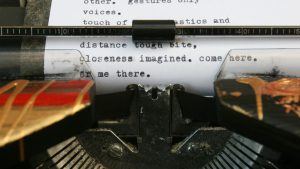James Hamblin in The Atlantic:
 This is a time of much division. Families and communities are splintered by polarizing narratives. Outrage surrounds geopolitical discourse—so much so that anxiety often becomes a sort of white noise, making it increasingly difficult to trigger intense, acute anger. The effect can be desensitizing, like driving 60 miles per hour and losing hold of the reality that a minor error could result in instant death.
This is a time of much division. Families and communities are splintered by polarizing narratives. Outrage surrounds geopolitical discourse—so much so that anxiety often becomes a sort of white noise, making it increasingly difficult to trigger intense, acute anger. The effect can be desensitizing, like driving 60 miles per hour and losing hold of the reality that a minor error could result in instant death.
One thing that apparently still has the power to infuriate people, though, is how many spaces should be used after a period at the end of an English sentence.
The war is alive again of late because a study that came out this month from Skidmore College. The study is, somehow, the first to look specifically at this question. It is titled: “Are Two Spaces Better Than One? The Effect of Spacing Following Periods and Commas During Reading.”
It appears in the current issue of the journal Attention, Perception, and Psychophysics. As best I can tell, psychophysics is a word; the Rochester Institute of Technology defines it as the “study of the relationship between stimuli (specified in physical terms) and the sensations and perceptions evoked by these stimuli.” The researchers are also real. Rebecca Johnson, an associate professor in Skidmore’s department of psychology, led the team. Her expertise is in the cognitive processes underlying reading. As Johnson told me, “Our data suggest that all readers benefit from having two spaces after periods.”
More here.
